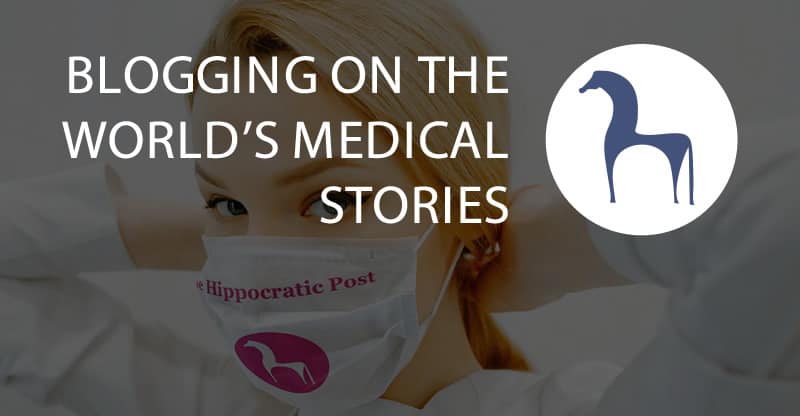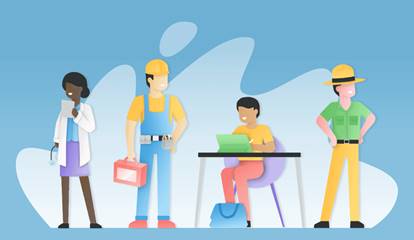Helping young people on the autism spectrum plan and prepare for their working life. “Don’t limit yourself. Go higher. Think bigger.” That’s the advice 20-year-old Liam Picen has for other autistic young people planning for their working life. Liam was part of the original research and development program for Autism CRC’s new smart web platform – myWAY Employability – which aims to support young people to take control of their future and career planning.
According to ABS 2018 data, more than one third of people on the autism spectrum are unemployed. This is more than three times the rate for people with disability and almost eight times the rate for people without disability. The situation is likely to have worsened in today’s COVID-affected employment market.
In addition, only 26% of autistic adults attain a post-school qualification from university or TAFE, compared to 45% for people with disability and 59% for people without disability.
myWAY Employability is Autism CRC’s latest offering to ensure their research provides practical and tangible outputs that benefit autistic individuals and their families. It was launched in August by Jackie Coates, Head of Telstra Foundation.
Empowering young people to use their diverse strengths and interests
Associate Professor Marina Ciccarelli, Curtin University Occupational Therapy Discipline Lead and Project Co-Leader said the free online platform has been designed specifically to help autistic young people, ideally aged 14-30 years old.
“myWAY Employability supports young people to take control of their future and career planning, improving the likelihood of a successful shift to work or further education,” A/Prof Ciccarelli said.
“The platform guides young people though a series of questions to help them identify their strengths, interests, learning and environmental preferences, and then matches this information to relevant potential careers and employment pathways,” she said.
Unlike other career planning and information services designed for the general population, myWAY Employability provides a personalised profile matched to relevant career information and pathways. Scaffolded goal-setting and action planning allows users to break goals into smaller action lists to track progress. It also contains a variety of information articles co-produced with the autistic community, covering topics such as preparing for work experience, getting around, creating a job application, pathways to further education and disclosure in the workplace.
Based on six years of research, trials and evaluation related to transition planning for young people on the autism spectrum, myWAY Employability can help to improve the self-determination of autistic young people to plan and prepare for their working life.
“We can’t wait to see myWAY Employability in the hands of young people all over Australia,” said A/Prof Ciccarelli.
“I would definitely recommend myWAY Employability to anyone who asked, considering it got my perfect job idea first time just from my interests and strengths,” Mr Picen said.
“The articles provided by myWAY Employability were very relevant. They actually answered a lot of questions I would have had a year or two ago, and one or two of them actually answered some questions I still had,” he said.
“It is important to dream big. It’s always important to do that. It will get you places,” Mr Picen said.
Co-design
Cheryl Mangan, Autism CRC Research Translation Manager and myWAY Employability Project Co-Leader, said the site was designed and developed in deep partnership with young people.
“Autistic young people told us that they would be more likely to engage in career planning and goal setting if they had a resource designed specifically for them that was fun, engaging, and personalised,” Ms Mangan said.
“We engaged with young people and their supporters every step of the way, through co-design workshops, user testing interviews, advisory groups and more. As much as possible we put the technology into the hands of young people, observed and listened.One of the most beautiful things about working with young people on the spectrum is that they’re really honest and very constructive, which is necessary in any co-design,” she said.
While myWAY Employability has been developed for young people on the autism spectrum, it is relevant, useful and available for all young people.
“We encourage all young people and their supporters to explore the site and make use of its features,” Ms Mangan said.
How can I support a young person to use myWAY Employability?
Getting familiar with the myWAY Employability website is a great place to start. Access to everything on myWAY Employability is completely free and involves a very simple registration process. Autism CRC refers to the people using the platform as ‘myWayers’. It’s important to stay positive and encourage the myWAYer to be at the centre of their own career planning: in the driver’s seat, taking charge of their decisions and actions.
Findings from the Better OutcOmes and Successful Transitions for Autism (BOOST-A) research program identified five evidence-based Employability Principles to support transition planning of young people on the spectrum.
Encourage the adolescent to dream big: Have high expectations and always be strengths-based.
- Start transition planning early: In Year 9 or as soon as possible after that.
- Promote youth-centred planning: The young person should be an active participant, and work towards becoming the transition planning team leader.
- Focus on the ‘big picture’: Support the adolescent to understand what life after school will be like through real life experiences; e.g., work experience, mentoring, volunteering, and part-time work.
- Have a champion on the team: A champion is someone who is passionate and enthusiastic, and provides new opportunities and information to support transition planning.
You may also consider how you can help the myWayer in your life to focus on a plan of action and stay on track to achieve their goals, and join them in celebrating every little success along the way.
Acknowledgements:
More than 300 autistic young people, parents, allied health professionals, educators, disability service providers and employers from around Australia were involved in the co-design and development of myWAY Employability. Autism CRC, would like to thank everyone who has contributed to the research, design and development process that has produced myWAY Employability. Without these contributions, myWAYEmployability would not have been possible.
myWAY Employability has been delivered through a collaboration between Autism CRC and its participants. The project was co-led by Curtin University and supported by Aspect and the Queensland Department of Education, along with technology development partner The Project Factory and research partner CSIRO e-Health Institute.
myWAY Employability is proudly supported by the Telstra Foundation, funded under the Tech4Good Challenge initiative.
Launch video: https://www.autismcrc.com.au/news/webinars/myway-employability-launch
- RV3-BB rotavirus vaccine at birth boosts microbiome - 8th May 2025
- No Mind Left Behind: Support the Carers - 4th May 2025
- Climate change causes longer pollen seasons in capital cities - 4th May 2025


